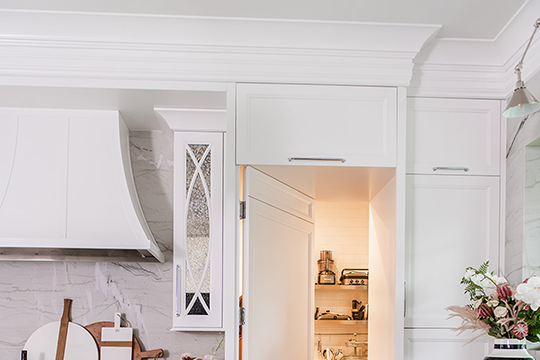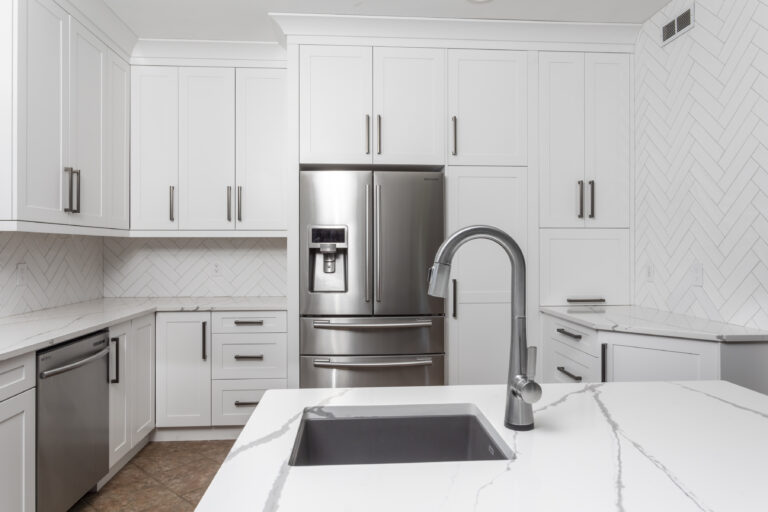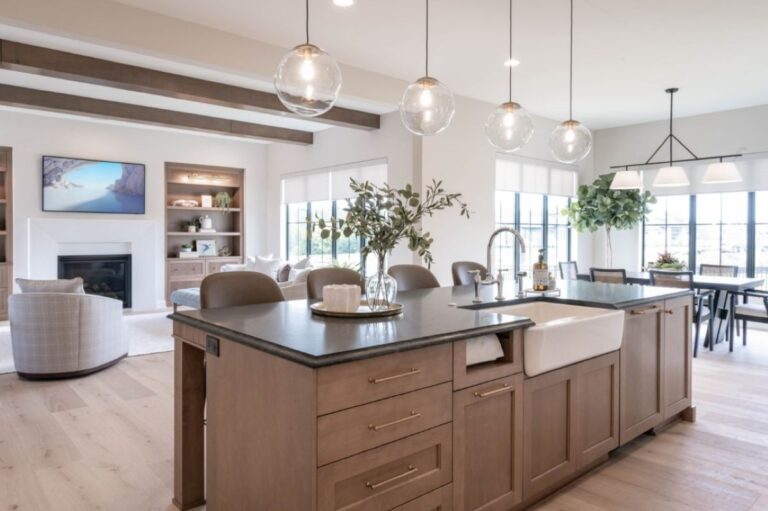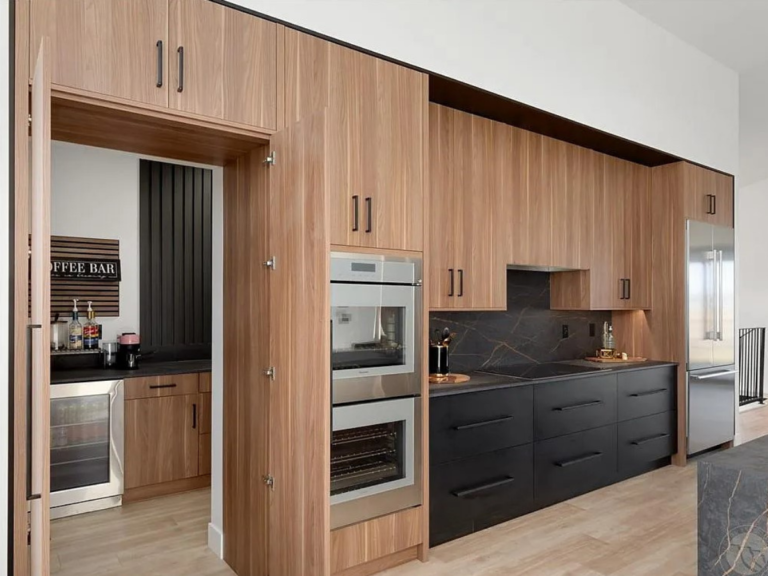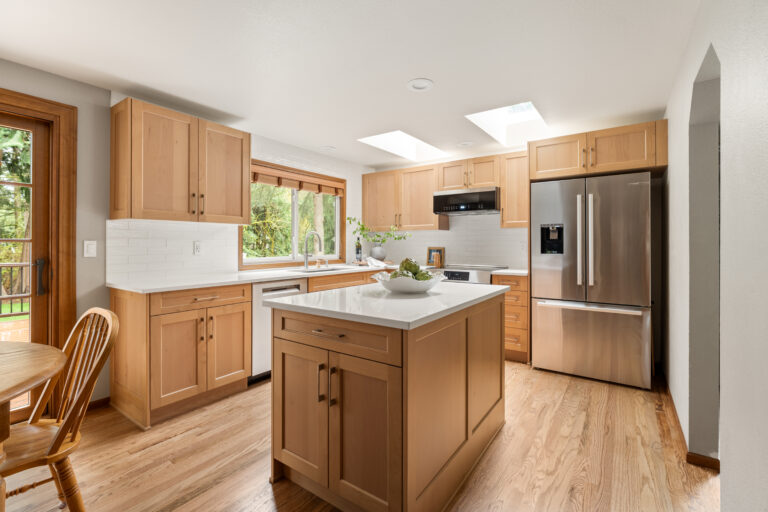Cabinet moulding is the finishing detail that gives your kitchen cabinets a polished, built-in look.
Whether you’re renovating an older home or building new, this design choice affects how your kitchen feels—visually and functionally.
Homeowners want spaces that feel personal, elevated, and complete. Cabinet moulding adds that sense of intention and detail that separates a basic kitchen from one that feels designed.
And in a custom kitchen, moulding isn’t just decorative. It’s often functional. It hides gaps, frames cabinets, and helps everything look perfect—even when walls or ceilings aren’t.
Types of Cabinet Moulding for Kitchens
There’s more than one kind of cabinet moulding. Each serves a different purpose and creates a different look.
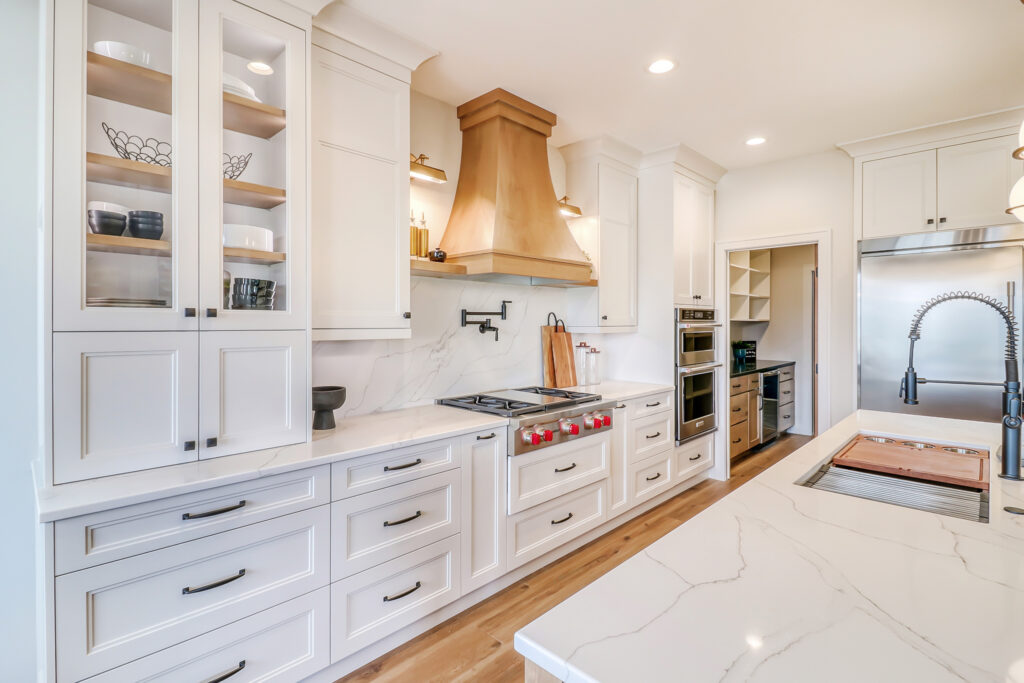
Crown Moulding
Crown moulding is installed at the top of the upper cabinets. It fills the space between the cabinet and the ceiling or simply adds height and interest to your kitchen design.
You might choose a traditional profile for a more classic kitchen. Or go with a slim, straight crown for a cleaner, transitional look. Either way, crown moulding finishes the top of your cabinets in a way that feels intentional.
For homes with uneven ceilings, it also covers gaps and reduces the need for precise drywall work.
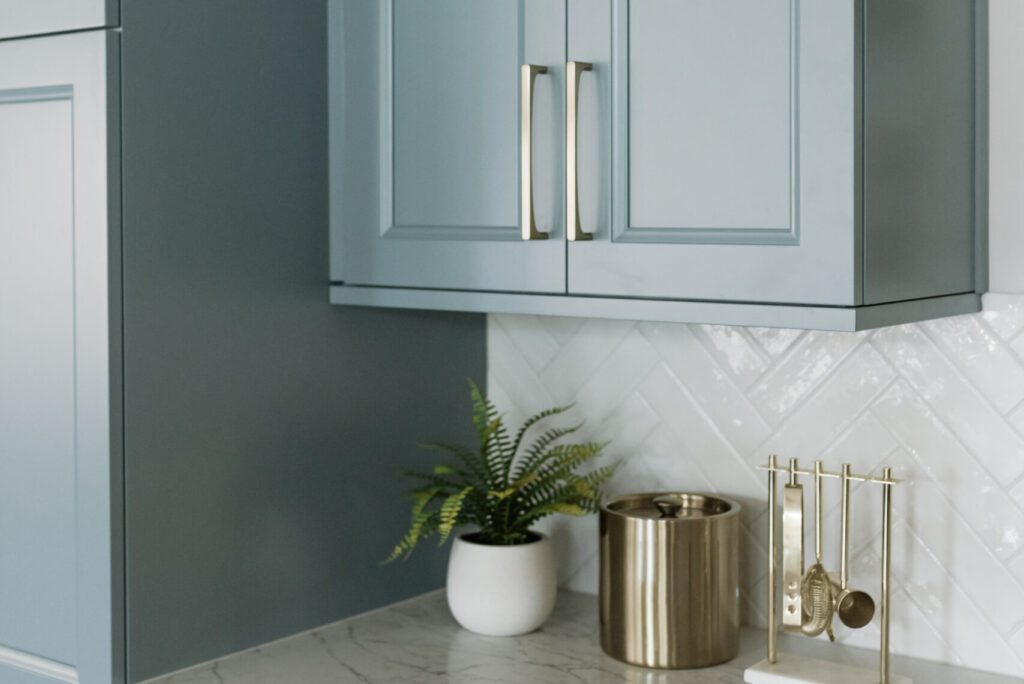
Light Rail Moulding
Light rail moulding runs along the bottom edge of upper cabinets. It’s mostly used to hide under-cabinet lighting, so you don’t see the fixture or wiring.
But beyond function, it creates a tidy shadow line. That small detail makes your cabinets look more custom, not off-the-shelf.
In contemporary kitchens, it’s often skipped. But in a more traditional or transitional space, it’s still popular—especially if lighting is part of your plan.
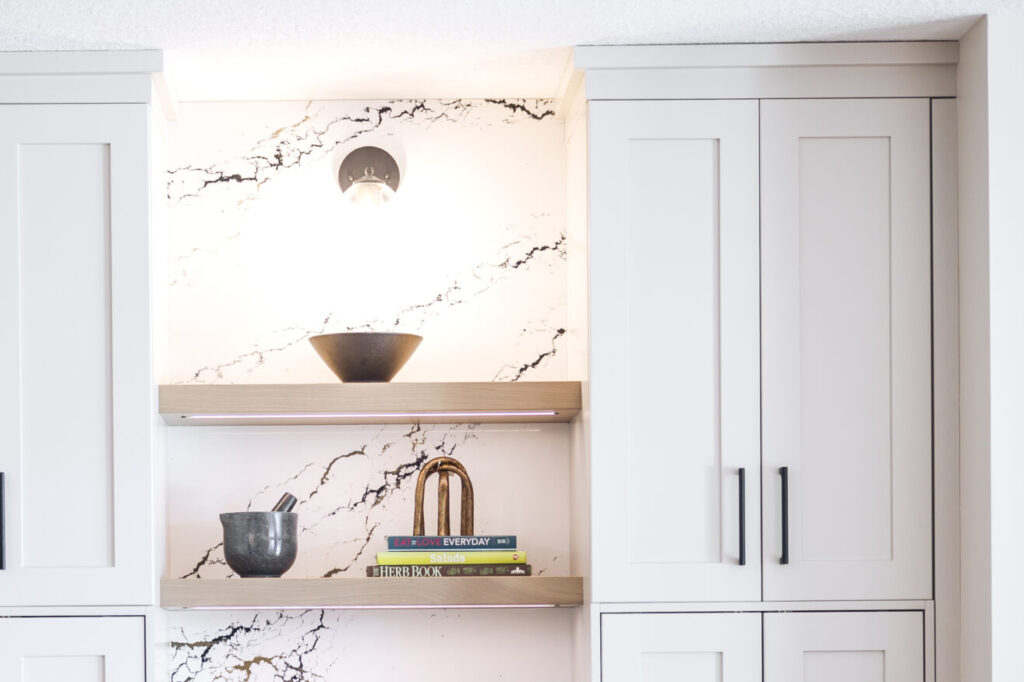
Scribe Moulding
Scribe moulding is a thin trim used to hide small gaps between the cabinet edge and a wall or ceiling.
Walls aren’t always straight. Neither are ceilings. When installing custom cabinets, scribe moulding covers any unevenness without needing to cut down the cabinet box itself.
Designers often use it in high-visibility areas like cabinet sides near windows, tiled walls, or range hoods. It keeps everything looking aligned and clean, especially in older homes with character.

Baseboard and Toe Kick Moulding
For full-height cabinets like pantries or appliance panels, baseboard moulding can finish the bottom edge, especially when cabinets don’t have recessed toe kicks.
Toe kick moulding (or skirting) covers the recessed area at the bottom of lower cabinets. You’ll see this more in custom cabinetry where the toe kick is used as a design element, not just a functional one.
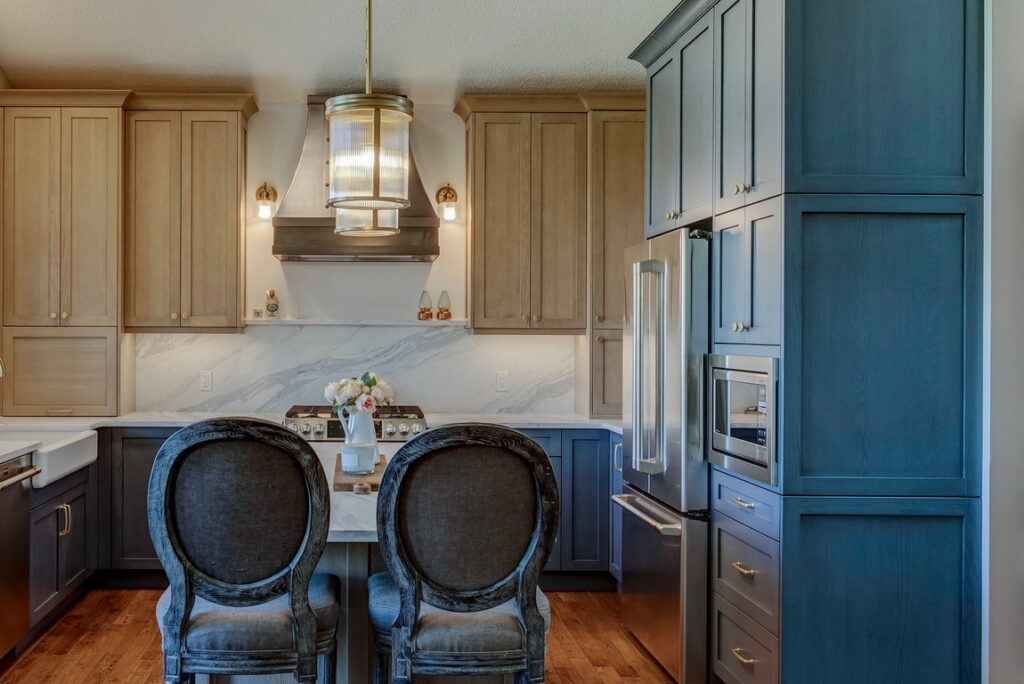
Applied Moulding
This is moulding added to the door face or cabinet sides to create more detail. It’s mostly used in traditional or furniture-style kitchens—think decorative posts, valances, or panel overlays.
Applied moulding is where style becomes more expressive.
Designers may use it to add texture, match a home’s architecture, or replicate vintage cabinetry in a heritage home.
Why Cabinet Moulding Is a Smart Choice in Custom Projects
When you’re working with a designer or design center, cabinet moulding isn’t an afterthought. It’s part of the full plan. You’re designing something built specifically for your space.
This includes how tall your ceilings are, how square your walls are, and how your kitchen connects to other areas. Moulding helps bridge all of these spaces together in a professional and elevated way.
You get:
- Better alignment with ceilings and walls
- Visual height or balance
- A tailored, built-in look
- Opportunities for character and architectural detail
In custom homes or renovations, especially in open-concept spaces, moulding helps define where the kitchen ends. That’s a small detail with a big visual impact.
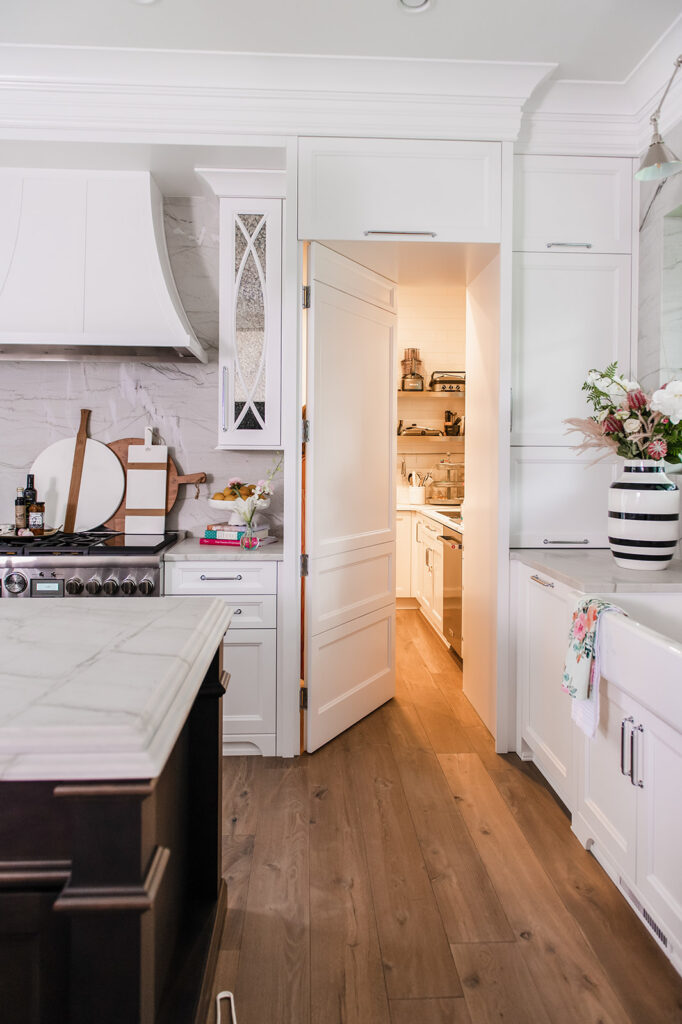
Does Every Kitchen Need Cabinet Moulding?
Not necessarily. Some kitchens are better without it.
If you’re doing a modern, European-style kitchen with flat doors and minimal aesthetic, you may want no moulding at all. That clean, seamless look is part of the style.
But even then, some basic moulding like scribe or toe kick trim may still be needed to finish edges cleanly.
Ask your designer what’s essential and what’s optional. In many cases, moulding is a mix of both—functional in some spots, decorative in others.
What Cabinet Moulding Costs (And What It’s Worth)
Custom cabinet moulding adds cost, but it’s not usually a budget-buster.
Large valances or detailed trim work will cost more than scribe moulding or a toe kick. Some mouldings are essential and built into the cost of the cabinet, as the design would be incomplete without it.
What you get in return for investing in custom cabinet moulding is:
- A finished look
- Cleaner lines
- Fewer awkward gaps
- A more upscale feel
If you’re investing in custom cabinetry already, moulding is one of the easiest ways to enhance the look.
Tips for Choosing the Right Cabinet Moulding
Here’s how to make smart choices for your project:

Match the Moulding to the Style of the Kitchen
In a traditional kitchen, go for more detailed crown profiles. For transitional, keep things simple but dimensional. In a modern kitchen, ask about slab moulding or skipping it altogether.

Think About Ceiling Height
If your ceilings are under 8 feet, you might not want a tall crown. A low-profile or no moulding look might work better. Taller ceilings can handle stacked cabinets and moulding that fills the space above.
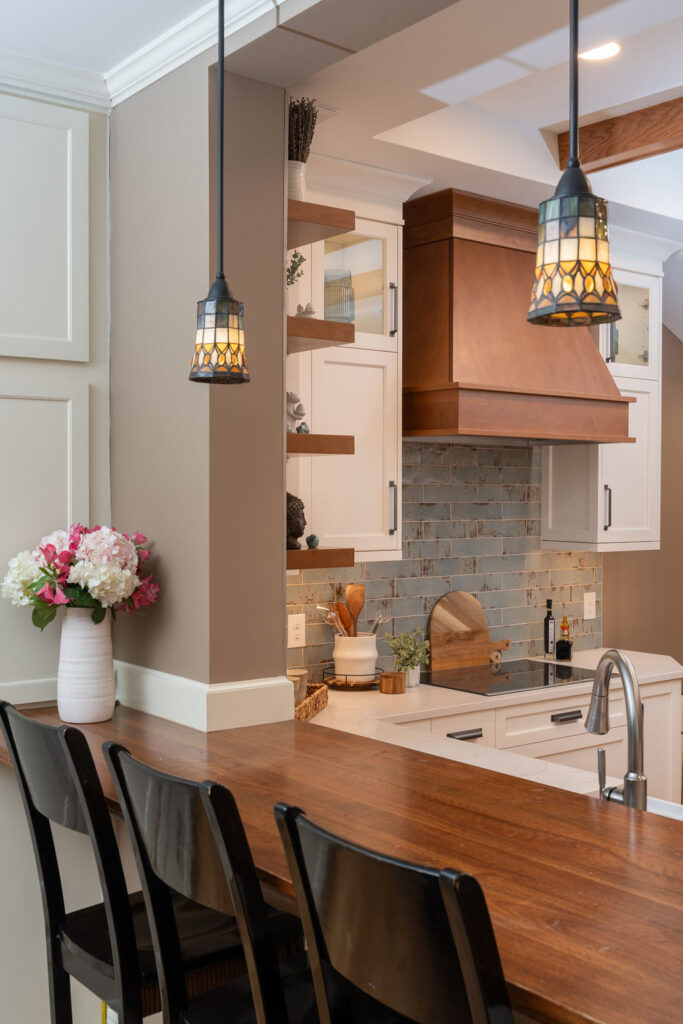
Choose Finishes That Blend or Stand Out
You can match the moulding to your cabinet finish, or you can make it a feature. A contrasting crown or applied detail can act as a subtle design moment.
Don’t Forget Function
Make sure lighting or wall gaps are being addressed with the right type of moulding. Your designer can help you balance aesthetics with practical needs.
What Designers Know About Cabinet Moulding
The benefit of working with a designer or design center is that they plan for details like this from the start.
You won’t get stuck at install with visible gaps or unfinished tops.
They’ll also guide you through moulding options that fit your space and budget. You’ll see samples. You’ll see renderings. You’ll get to choose what feels right—rather than guessing.
That’s a huge difference from ordering stock cabinets online or from a box store, where trim may not be part of the offering.
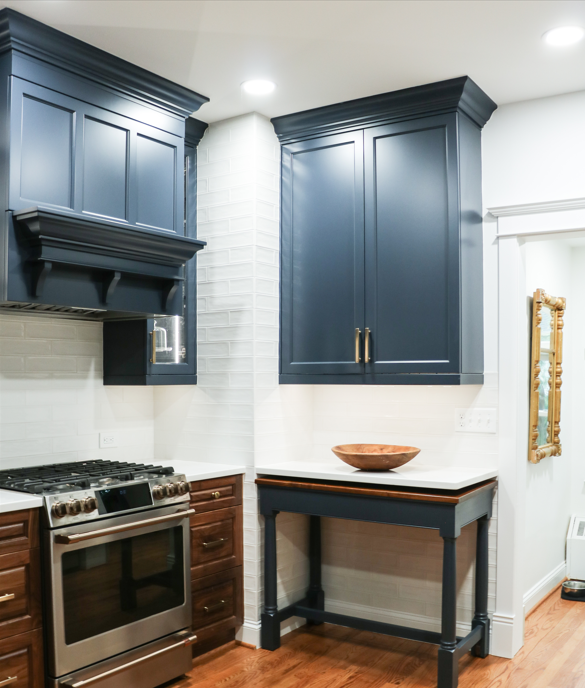
Real Questions You Might Be Asking
Can I add cabinet moulding later?
Sometimes. But it depends on the cabinet design and install. It’s better to plan it at the start so the finishes match and the entire kitchen ages at the same time.
Is cabinet moulding painted or stained?
It’s usually finished the same as your cabinets. Painted cabinets get painted moulding. Stained cabinets get matching stain. It’s part of the full package.
What if I have uneven ceilings?
That’s exactly when you want moulding like crown or scribe. It helps cover inconsistencies and makes everything look aligned.
Is moulding worth it in a small kitchen?
Yes, especially if your cabinets stop short of the ceiling. It adds height and makes the room feel more finished. Toe kick and scribe moulding are often standard for any size of kitchen.


